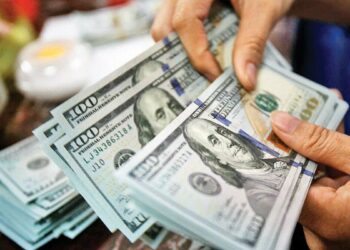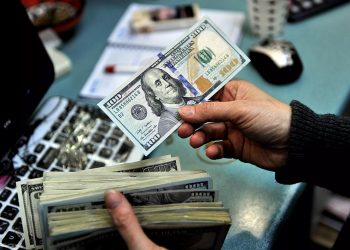The market is looking for a shift from the Fed, but it might not be as dovish as some expect
Major global stock markets are a sea of green at the start of the week, after sharp sell offs last week. Volatility has eased as the market waits for the much-anticipated Jackson Hole conference at the end of this week. The Federal Reserve announced that the meeting will be held virtually this year due to the surge of Delta-variant Covid infections in the US, which are averaging nearly 150,000 new cases per day. This has boosted expectations that the Federal Reserve’s Jerome Powell will back away from taper talk later this week and, with a quick wave of his magical money wand, all will be good with the world and financial markets will continue to make record highs once more.
Markets get excited about expected Fed U-turn
Of course, this isn’t the only thing that is driving markets higher, but the prospect of a shift in tone from the Federal Reserve is now being priced in by financial markets. There are two clear examples that this is the case. Firstly, Tesla, the electric car maker, rose more than 1% on Friday. This is significant since Tesla is a poster boy for the growth stock brigade, and it tends to rise when fears about rising inflation and rising interest rates are low. We expect further gains at the start of this week as a more accommodative speech from the Fed later this week is priced in. Added to this, since the 11th August 10-year US Treasury yields, which act as a benchmark, have fallen by 10 basis points to 1.26%. Other drivers that are causing markets to price in a dovish Federal Reserve at this week’s Jackson Hole meeting include disappointing economic growth.
Is weaker economic data something to worry about?
In the past two weeks US consumer confidence levels have crashed, retail sales in the US were worse than expected and there was a slowdown in new home construction last month. US economic data has missed the mark by the greatest degree since the peak of the pandemic last year. Investor anxiety about a growth slowdown has increased, and this has also impacted the Fed. Dallas Fed President Robert Kaplan said at the weekend that the rise of Covid infections in the US could cause him to consider delaying voting to taper asset purchases. This is significant since Kaplan is considered a hawk on the FOMC. There are other indicators in asset prices that suggest that the market thinks that Fed tapering is off the menu for now. Bitcoin/USD is up more than 2% so far on Monday and it has now breached the $50,000 mark and is at its highest level since May. The price of Bitcoin tends to rise when the market expects central bank largesse as this is considered a way to erode the value of fiat currency.
Why the Fed may not deliver as dovish a message as expected
We now expect the Fed to bow to market expectations and to row back from taper talk at this week’s virtual Jackson Hole symposium. This means that the risks of a hawkish surprise, while low, could be dangerous for risk sentiment in the coming days. Added to this, the question now is, when will tapering take place. It is worth watching where Treasury yields go after Jackson Hole. If the Fed says that tapering could happen in December, then we think that this could trigger a large upswing in US Treasury yields and knock risk sentiment. Thus, markets cannot count on a dovish Fed at this meeting. This is exemplified in the FX market. The dollar is giving back some gains, however, they remain moderate so far. For example, GBP/USD is up some 0.3% at the start of the week, but it is still some way off the near $1.40 highs at the start of August. Likewise, EUR/USD is up some 0.2%, but remains close to its lowest level in 10 months. Thus, the dollar’s performance at the start of this week could be a sign that stock markets should not be too reliant on a dovish Fed to drive future gains. One of the drivers that could help market sentiment is news that China has irradicated the Delta variant after 1 month of harsh lockdowns. This could ease concerns about supply chain shortages and price rises down the line.
PMIs remain strong in Europe, but some misses add to concerns
Elsewhere, preliminary PMI reports for Europe for August are high by historical standards, although there were some notable misses. For example, in the UK, service sector PMI was weaker than expected, at 55.5 vs expectations of 59, although part of this was down to the “pingdemic” that weighed heavily on the service sector earlier this month. In the Eurozone, the composite PMI came in a touch below expectations at 59.5 vs. 59.7, with weaker services for France and weaker manufacturing for Germany. Either way, these surveys show that the UK and Eurozone economy held up well in the face of rising Delta variant fears, and the fears about growth could be overdone, which would also be good news for stocks and risk sentiment in the medium term.









